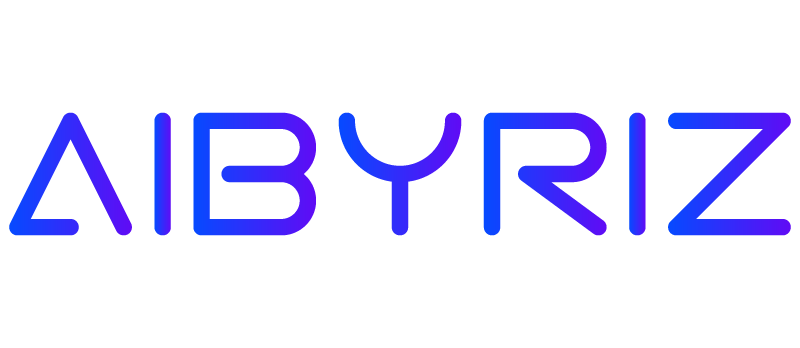Generative AI tools are advancing quickly, creating a major skills gap in today’s workforce. Company executives admit they don’t know how to use AI effectively, with 87% feeling unprepared. Team leaders must help their people adapt to this technological change while keeping them productive and involved. Organisations can turn this challenge into a chance to build stronger, more capable teams through well-planned AI training programmes.
This detailed guide shows you how to help your teams grow with generative AI tools. You’ll find practical ways to build AI knowledge across departments and create hands-on learning experiences. The guide explains how to develop lasting AI capabilities in your organisation. It covers everything from ethical AI use to mentoring programmes and building centres of excellence that ensure long-term success in AI adoption.
Understanding the Impact of Generative AI on Your Workforce
Generative AI continues to revolutionise traditional work patterns in a variety of industries. Companies are experiencing a major transformation in their operations. McKinsey’s analysis reveals that generative AI could automate between 60% to 70% of current employee workloads 1. This creates new challenges and opportunities for workforce development.
AI Use Cases in Different Departments
Generative AI affects business functions differently. Studies show that four key departments create about 75% of the yearly value from generative AI applications 2. These departments are customer operations, marketing and sales, software engineering, and research and development. Different departments use AI in unique ways:
| Department | Primary AI Applications |
|---|
| Customer Service | Automated support, response generation |
| Marketing | Content creation, campaign optimisation |
| IT/Software | Code development, debugging |
| R&D | Data analysis, innovation support |
Identifying roles most affected by AI
AI’s influence on jobs varies by position and industry. Research shows that 79% of working women have positions susceptible to automation compared to 58% of working men 3. Several jobs face major changes:
- Administrative positions (data entry, record keeping)
- IT and software development roles
- Customer service representatives
- Content creation and marketing professionals
- Financial analysts and processors
Anticipating future AI skill requirements
Organisations adapting to AI integration see job skill requirements changing faster than ever. The World Economic Forum expresses that skill sets for jobs have changed by approximately 25% since 2015, with expectations of doubling by 2027 4.
The workforce needs preparation to collaborate with AI systems. Knowledge workers dedicate about one-fifth of their time to search and gather information 2. AI can substantially improve this process and enable employees to focus on tasks that need human judgement and creativity.
Organisations now prioritise the development of technical and soft skills. Survey data reveals that 66% of U.S. executives acknowledge that implementing generative AI requires both hiring new talent and training existing employees 5. The most predicted skillsets combine expertise in AI, machine learning, natural language processing, and text-to-speech technologies.
Building a Foundation of AI Literacy
The foundation of AI literacy starts with basic concepts that shape this advanced technology. Organisations need a detailed knowledge base that becomes significant when they adopt AI tools for successful implementation.
Introducing key AI concepts and terminology
Teams must understand fundamental AI concepts to direct their path in this field. Generative AI uses machine learning principles and builds systems that create new content from patterns in training data 6. Let’s break down these core concepts:
| Concept | Description |
|---|
| Large Language Models (LLMs) | AI systems trained to generate human-like text based on input prompts |
| Neural Networks | Computational models inspired by the human brain for learning from data |
| Generative AI | Systems that create new content in different mediums |
Real-life AI Applications
AI literacy shows its true value through ground applications. Research indicates that generative AI automates content creation, boosts customer satisfaction, and creates tailored education paths 6. Companies achieve remarkable results by:
- Using AI-powered content generation tools for marketing materials (projected to reach 30% of outbound marketing by 2025) 7
- Applying AI tools that speed up prototyping and design iterations 6
- Employing AI to create tailored learning and skill development programmes 6
Addressing ethical considerations of AI use
Teams need to grasp ethical implications as they build their AI literacy. Research expresses several critical points that organisations must tackle head-on.
AI systems leave a substantial environmental footprint. Building and training models need massive energy resources that add to carbon emissions 8. Organisations should assess if their AI applications justify this environmental cost and look for ways to improve efficiency.
Data Privacy and Security: Teams must handle sensitive information carefully when they work with AI tools, since these platforms could store and collect user data 8. Clear guidelines for data handling and privacy regulation compliance should be part of every organisation’s protocol.
Bias and Accuracy: AI systems often show bias in their output due to several factors:
- Training data’s inherent bias
- Biases that creators build into the system
- Self-developed biases from how the system interprets data 8
Organisations should regularly assess their AI systems and stay transparent about their AI technology use 9. This builds trust with teams and customers while ensuring responsible technological advancement.
Empowering Teams with Hands-On AI Experience
Teams need practical, hands-on experience in a supportive environment to implement AI successfully. Organisations that accept experiential learning approaches have achieved substantially higher AI adoption rates. Their teams have shown better confidence when using AI tools.
Providing access to AI tools and sandboxes
Safe environments for experimentation play a significant role in building team confidence with AI tools. Many organisations now use “AI sandboxes” to help their teams grow. These controlled spaces let employees test various AI tools safely without operational risks 10. The sandbox structure includes:
| Sandbox Component | Purpose |
|---|
| Practise Environments | Safe spaces for tool experimentation |
| Guided Tutorials | Step-by-step learning materials |
| Live Feedback | Immediate response on tool usage |
| Performance Tracking | Progress monitoring and assessment |
Organising AI hackathons and challenges
AI hackathons serve as dynamic platforms that spark state-of-the-art solutions and enhance skills. A recent study revealed impressive participation rates when companies host these events. One organisation’s employees showed remarkable enthusiasm with over 1000+ registrations in their first week after announcement 11. These events create breakthroughs through:
- Shared problem-solving opportunities
- Real-life application of AI tools
- Knowledge exchange between departments
- Quick learning from direct feedback
Success requires careful planning. Virtual hackathons need at least 4 weeks of preparation time. Physical events demand 12 weeks to manage complete logistics effectively 11.
Encouraging cross-functional AI projects
Teams working across different departments have shown better results in AI implementation. Research shows that companies get the best results when their AI projects bring together data scientists, business owners, and IT specialists 12.
Success in cross-functional AI projects depends on open communication channels and a culture that makes shared work natural. Companies should prioritise:
Team Composition: AI leaders, builders, business executives, and IT specialists must work together to cover all project aspects 12.
Knowledge Exchange: Teams need regular cross-departmental meetings and shared platforms to help information flow freely 13.
Skill Development: Both floating mentors and scheduled office hours give teams reliable access to expert guidance 11.
Companies now use two approaches to mentorship that blend scheduled office hours with floating mentors 11. This approach gives teams the guidance they need while keeping their learning process flexible.
Long-term success requires clear AI usage policies and guidelines 14. These rules help teams understand their limits while accepting new ideas within set boundaries. Teams stay at the vanguard of tech advancement through regular reviews of new AI technologies and industry standards 15.
Sustaining Long-Term AI Capability Development
Organisations now prioritise well-laid-out frameworks and support systems to maintain their AI success over time. Large U.S. firms have made significant progress in this direction. Their executives report that 37% of companies are 6-months old AI oversight groups 16. This trend shows how businesses recognise the importance of developing AI capabilities systematically.
Establishing AI centres of excellence
AI Centres of Excellence (CoE) have become the life-blood strategy that organisations need for long-term AI success. Deutsche Bank, J.P. Morgan Chase, and Pfizer lead the way with their 5-year old centralised AI oversight groups 16. These industry giants set standards that guide structured AI development.
Organisations need a clear structure and defined responsibilities to create successful AI CoE:
| Component | Function |
|---|
| Leadership Team | Strategic direction and governance |
| Technical Experts | AI implementation and development |
| Domain Specialists | Business context and application |
| Ethics Officers | Compliance and responsible AI use |
Latest research reveals that companies with AI CoEs achieve desired results 63% more often than those without structured approaches 17. These centres act as central hubs that bring together expertise, resources, and best practises. They make sure AI initiatives support strategic goals effectively 18.
Creating AI mentorship programmes
AI has democratised mentorship and created a remarkable chance for workforce development. Organisations now implement innovative approaches to scale their mentorship programmes. Research shows that systematic mentorship processes are especially important for traditionally disadvantaged groups 19.
Successful AI mentorship programmes need these essential elements:
- Predictive matching algorithms to pair mentors and mentees
- Making use of information to track progress and measure outcomes
- Hybrid approaches that blend AI assistance with human guidance
- Regular feedback loops that drive continuous improvement
Companies using AI-enabled mentorship programmes report better inclusion and skill development results. To name just one example, some organisations use AI platforms that match mentors and mentees based on priorities, skills, and scheduling factors. These matches create more effective partnerships 19.
Continuously updating AI curriculum
AI technology’s dynamic nature demands an agile approach to curriculum development. Organisations that use AI-driven curriculum adaptation have achieved 27% better learning outcomes 20. Students learn more through dynamic, relevant, and effective learning pathways.
Organisations are using these key strategies to keep their curriculum relevant:
Data-Driven Updates: Student outcomes and job success analysis helps refine curriculum live 20.
Industry Alignment: AI systems spot and fix skill gaps by analysing industry needs and educational content 20.
Personalised Learning Paths: AI creates tailored learning experiences based on each student’s needs, interests, and career goals 20.
These strategies need proper governance structures. Organisations have set up AI Ethics Boards for Education and run regular AI audits to maintain ethical guidelines 20. On top of that, 45% of companies have AI champions at the executive level 16. This shows their steadfast dedication to AI growth.
Organisations create collaborative spaces where educators, industry experts, and students work on AI-driven projects together. These “Education-Industry AI Labs” make ground application of AI skills easier 20. AI Curriculum Fellowships bring industry expertise straight into classrooms.
Long-term AI capability development succeeds through clear ethical guidelines and governance frameworks. Organisations must run AI initiatives with consistency, transparency, and ethical awareness 18. This approach boosts AI initiatives’ effectiveness and helps attract and keep top talent. The result is ongoing improvement and competitive edge 18.
Key Takeaways
Organisations that follow a well-laid-out approach to AI upskilling are leading technological advancement. Teams adapt with confidence to AI changes when they combine AI literacy programmes with hands-on experience and teamwork across departments. A reliable foundation for workforce development emerges through dedicated centres of excellence and mentorship programmes. These teams maintain high performance standards throughout their AI journey.
AI-enabled workforces open up remarkable opportunities for everyone involved. Teams grow stronger and organisations succeed. Companies see their teams become more productive when they invest in complete AI development programmes. Their people participate more and create state-of-the-art solutions. Organisations build resilient teams through systematic upskilling and continuous learning. These teams excel in an AI-enhanced future and create lasting value in business functions of all types.
References
[1] – https://www.eweek.com/artificial-intelligence/generative-ai-enterprise-use-cases/
[2] – https://www.mckinsey.com/capabilities/mckinsey-digital/our-insights/the-economic-potential-of-generative-ai-the-next-productivity-frontier
[3] – https://www.techtarget.com/whatis/feature/Will-AI-replace-jobs-9-job-types-that-might-be-affected
[4] – https://www.futurelearn.com/info/courses/generative-ai-in-higher-education/0/steps/389485
[5] – https://kpmg.com/us/en/media/news/kpmg-genai-workforce-survey.html
[6] – https://www.linkedin.com/pulse/part-one-introduction-generative-ai-its-potential-mike-mullins-uwxbc
[7] – https://www.coursera.org/articles/generative-ai-applications
[8] – https://guides.library.ualberta.ca/generative-ai/ethics
[9] – https://www.salesforce.com/artificial-intelligence/generative-ai-glossary/
[10] – https://creativehq.co.nz/generative-ai-sandbox/
[11] – https://www.onova.io/innovation-insights/genai-hackathon-case-study
[12] – https://www.datarobot.com/blog/driving-ai-success-by-engaging-a-cross-functional-team/
[13] – https://www.linkedin.com/pulse/building-cross-functional-teams-successful-generative-jamison-pmp–twgic
[14] – https://360learning.com/blog/l-and-d-podcast-egle-vinauskaite/
[15] – https://builtin.com/artificial-intelligence/generative-ai-implementation
[16] – https://hbr.org/2019/01/how-to-set-up-an-ai-centre-of-excellence
[17] – https://www2.deloitte.com/content/dam/Deloitte/us/Documents/consulting/us-ai-institute-generative-ai-and-the-future-of-work.pdf
[18] – https://medium.com/@david.a.ragland/how-to-set-up-an-ai-centre-of-excellence-e9dcd207b8e4
[19] – https://www.worklife.news/technology/how-ai-reshaping-mentorship-gen-z/
[20] – https://www.linkedin.com/pulse/ai-driven-curriculum-adaptation-navigating-future-education-webb-rl33e














